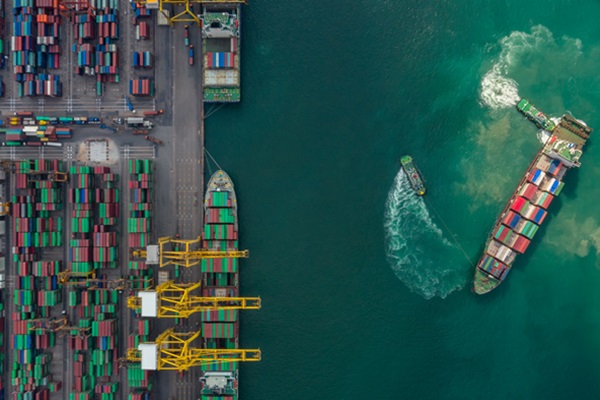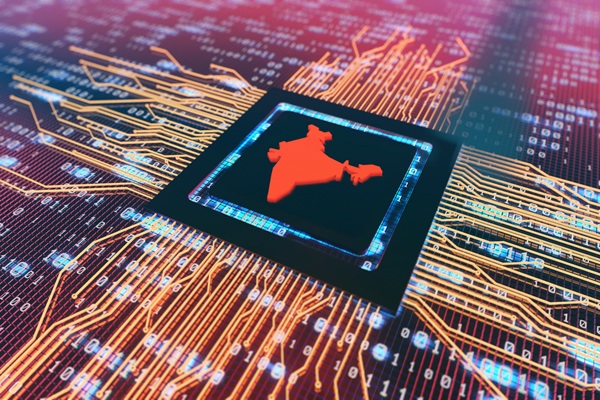.png)

Groupthink is the House View of BasisPoint’s in-house columnists.
April 9, 2025 at 12:41 PM IST
India’s services exports have turned into the macroeconomic equivalent of a comfort blanket. Policymakers routinely invoke the country’s resilience in software, business services and remittances as evidence that the current account deficit remains well within the bounds of sustainability. Yet, with the global trade landscape shifting dramatically—and not in India’s favour—this optimism risks becoming a distraction from structural vulnerabilities that could soon resurface.
The Reserve Bank of India, in its recent commentary, highlighted the net services and remittance surplus as a reliable counterweight to the merchandise trade deficit. The headline numbers seem to support that view. From April 2024 to February 2025, India’s services exports stood at $352 billion, up nearly 13% from a year earlier. The net surplus for that period rose to over $170 billion, a meaningful buffer against a growing merchandise trade gap of $261 billion for the April–February period.
But the context is shifting—and fast. With the United States’ new tariff regime in place, China is no longer able to push its exports into American markets as freely. That redirection is bound to land at the doorstep of countries with relatively open trade frameworks and large consumer bases. India, despite recent tariff adjustments and a marginal tilt toward self-reliance, remains an attractive spillover market. Its bilateral trade deficit with China has already widened, and early data suggest a growing influx of electronics, chemicals and intermediate goods—categories closely tied to China’s industrial overcapacity.
India may not be an active participant in the global trade war, but it is almost certainly going to suffer collateral damage. Countries with large current account surpluses—China, Vietnam, even the Eurozone—are likely to seek alternative destinations for their exports. This will widen India’s trade deficit unless policymakers act pre-emptively to contain import surges. Relying on a strong services performance to paper over this imbalance could prove short-sighted.
There is also growing concern that the RBI may have overpromised on the policy front—particularly on liquidity and interest rates—in a volatile environment for currencies. At a recent press conference, Governor Sanjay Malhotra signalled that the central bank would allow the rupee to depreciate if market forces warranted such a move, intervening only to quell volatility. While he emphasised that India was better placed than China and Vietnam—citing their heavier dependence on trade—this framing misses a key point. Vietnam runs a current account surplus. India, in contrast, runs a deficit. Without sustained capital inflows backed by strong GDP growth, the rupee may remain under pressure. What that means for overall financial stability is an open question.
Even the services surplus may be entering a more uncertain phase. Much of the recent growth has come from software and IT-enabled services, particularly orders from US-based banks, consumer companies and logistics firms. However, with the American economy now facing the dual risk of stagflation and policy uncertainty, these orders are unlikely to remain insulated. Indian IT majors have already flagged softness in client budgets, and given that outsourcing contracts typically run on multi-quarter lags, the full effect of US economic deceleration may hit only by the second half of the year.
Transportation and business services, two other bright spots in the services basket, are hardly immune either. Shipping routes remain volatile due to geopolitical risks, and global demand for corporate outsourcing may slow if the US and Europe experience a demand pullback. Even the remittance boom has caveats: while long-term migration patterns are shifting in India’s favour, a significant share of current flows still originates from the Gulf economies. Any weakness in oil prices or regional labour reforms could compress those inflows.
None of this is to say India faces an immediate balance-of-payments crisis. The country’s reserves remain comfortable, its capital account remains reasonably resilient, and the software-export engine has decades of institutional depth. But the idea that services and remittances can easily insulate India from a worsening external environment is overstated.
As global trade fractures and capital flows become more erratic, India will need to do more than point to its expat engineers and offshore coders. It must reckon with the new trade reality—one where countries with surpluses will dump goods wherever they can, and where buffers that once felt solid may prove cyclically thin.
Software and children abroad can’t do all the heavy lifting forever.




